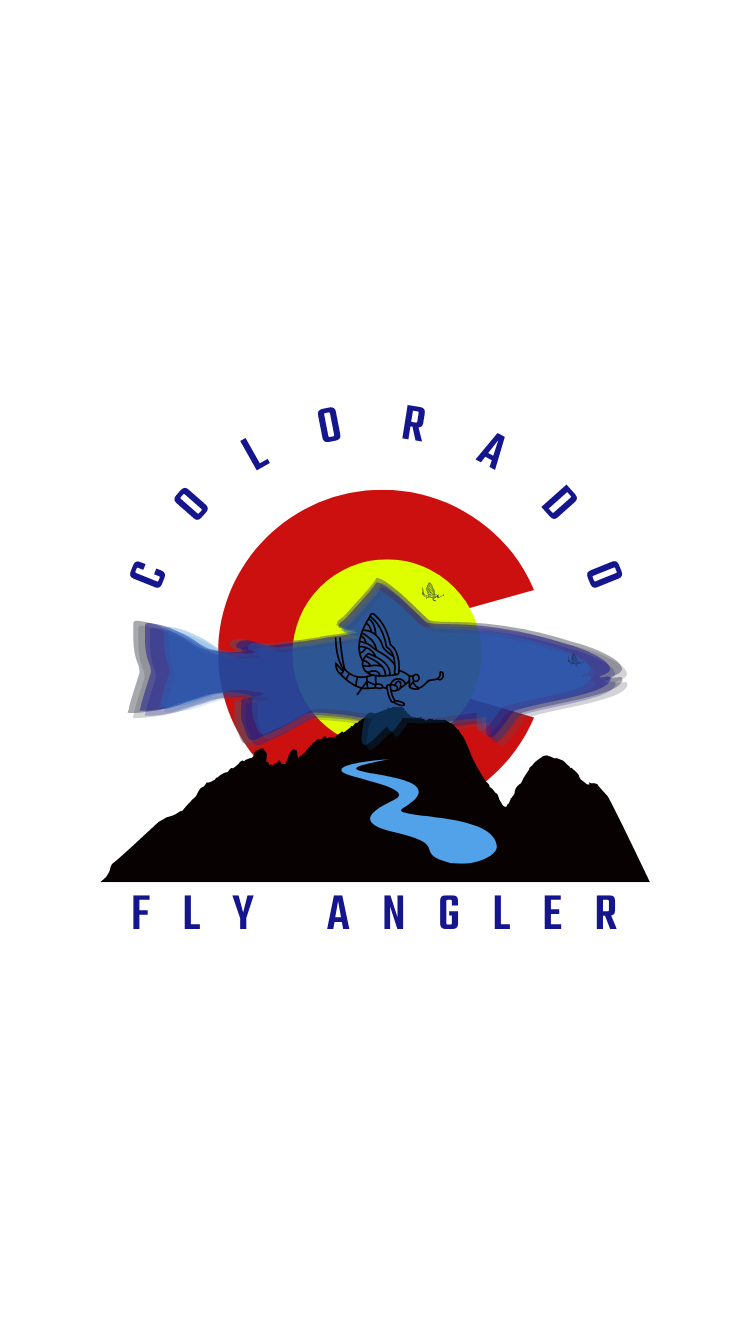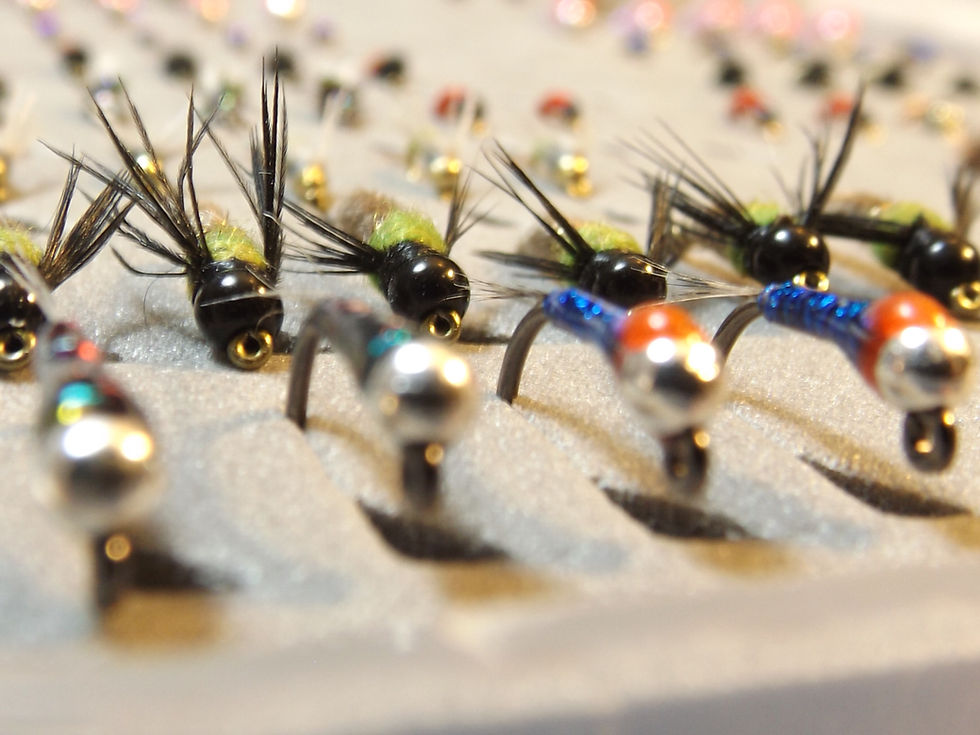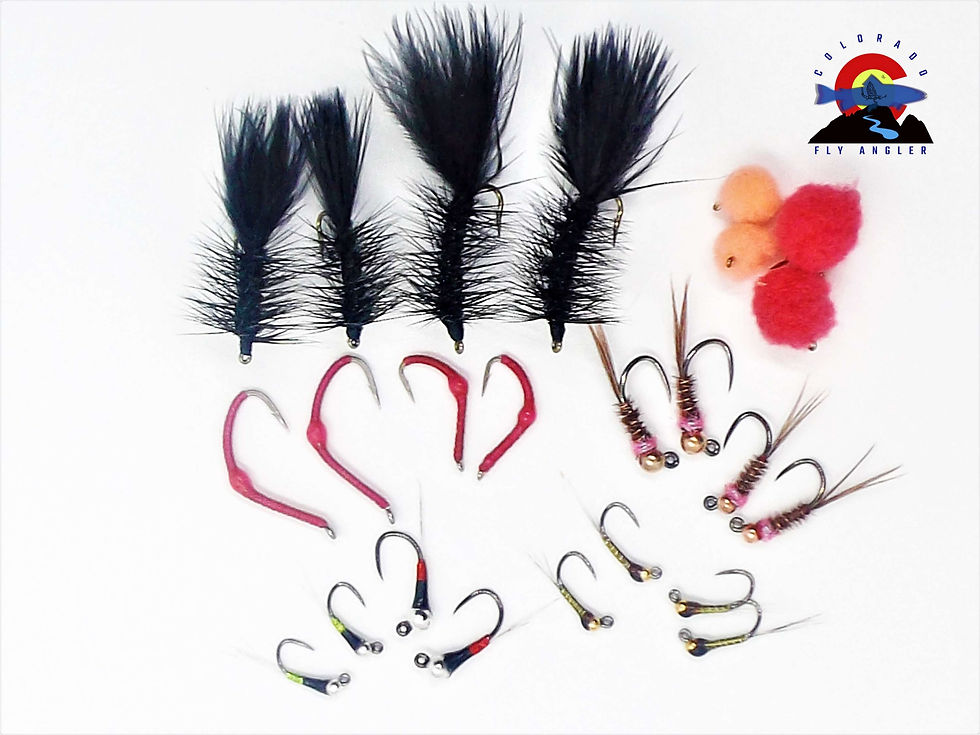Choosing the Right Fly Tying Materials
- Chris Hull

- May 21, 2023
- 5 min read
As fly fishermen we dream about time spent on the water. It's what we live for; those moments of hooking up with our desired species. The exhilaration that comes from seeing that trout come up and sipping our fly, or the thrill of seeing the indicator jet beneath the surface is exactly why we dream of our time spent on the water. Unfortunately, that exact feeling often leaves us with less than desired outcomes and results in near restless days waiting to get back again. We are so driven to feel that exhilaration that we can overlook all the fine details as to what it takes to achieve the bliss that comes from a fish on the end of our line. We successfully get a dead drift, we assure that we fish productive waters at opportune times, and we even place our fly in the right spot after tying it on with a perfect knot.

Occasionally, however, it is the little detail there at the end of a perfect presentation and seemingly perfect rig that creates that fly fishing feeling of short fall, that inadequacy that leaves us restless and not feeling accomplished. If we don't have the right fly at the end of the line, all else doesn't even matter. When I personally get the chance to head to the stream, I start thinking about fly selection before I even depart. For myself, this often results in near sleepless nights tying flies at the bench the evening before I'll set out. I'll tie whatever patterns I don't have that I think have a possibility of getting consumed the next day. For others, it is the process of the ritualistic visit to the fly shop to stock up, or even ordering our flies online. Having the right flies in our box is more than half the battle when choosing the correct pattern.
There are many questions that go into the selection process...what have they eaten here before or what was the hot fly the last time I was here? (Sidenote: this is where keeping a fishing log can come in handy). Other inquiries enter my thoughts...what season is it? What time will I be fishing? What bugs shall I expect to see? What will the water conditions be? These are all questions that can be thought over before even stepping into the water, and the more answers you can come up with then will exponentially increase your odds of feeling success at the end of your next trip. Again, being prepared before battling trout is key. When I do finally show up to the river my first question in the selection process is “will what I have tied on already work?”, as I often leave my rig set up from the last outing. I find that if I've been out recently, in similar conditions, at similar altitude, the answer is often yes. In that case, were good to go. Think high mountain freestone streams when applying this general rule.

Otherwise, the first step in my selection process is observation. Even before I leave my truck I look to see if I notice any bugs. Are there any aquatic based invertebrates within sight...caddis, mayflies, midges or stoneflies? If so, what stage are they in...adult or spinner? Are they actively hatching now? What size and color are they? I also look for terrestrials while I'm rigging up; how many times do we see beetles, ants or hoppers on the way to the river or even while putting waders on? If the answer is no to both of those questions I depart for the river, upon which I like to shake the bushes and flick vegetation with my rod during the walk. There aren't too many times that I do this and don't see something flying around. Again...what species, stage, size and color are these bugs? When I get to the river, if I still haven't figured out what to fish, I again observe, from afar, so as not to spook any potential trout holding where I will put in. I observe the space above the water. What is flying around? Are these bugs hatching or returning to lay eggs? I observe the surface. Is anything rising to the surface? Do I see any bugs floating in the water, be it dead or alive? If we still haven't answered our question, I think logically. If it's early morning in my parts of the country, a midge dry and a midge nymph is never a bad bet. Midges are almost always the most prevalent species in any given river and always active, during all seasons.
Early mornings also call for spinner activity if mayflies have been active. Also, what bugs do I expect to hatch later in the day? If I know that certain adult specimens are going to hatch later in the day I will be prone to throw those nymphs early in the morning. On the other hand, if I arrive midday or even later in the afternoon during the hottest parts of the day, I will expect aquatic invertebrates to be less active. This is a great time for throwing a terrestrial pattern. Perhaps a hopper-dropper with a drowned ant or beetle will be the ticket. This may well also be the best time to throw our favorite attractor searching patterns.
If I still haven't solved my dilemma of choosing the right fly then I go one of two routes. I either throw patterns that are over producers; in my area, and most trout waters, this would include pheasant tails, rainbow warriors, caddis larvae, Adams dry flies, Stimulatorals, and Chubby Chernobyls, just to name a few. If those don't work then it's just time to throw on my confidence rig. My personal favorite is a Chubby down to a Pandemic Special Leech with the option of a caddis, mayfly or even a perdigon on point. What is your confidence rig? You should know it and there's a possibility that your confidence rig varies from river to river and even season to season.

The last rule I will mention is two fold; flexibility and thinking outside the box. Always be willing to change patterns throughout the day. And don't be afraid to think outside the norm. Sometimes that fly that we always overlook is often overlooked by many anglers. Surely, if the trout haven't seen it over and over, our chances are sometimes increased by these patterns. After choosing the right fly and finding success, we sometimes tend to think that the “trout have turned off” when the catch rate slows; when in fact, they've adapted their eating habits. When the “trout turn off”, more often than not it's the fly that you currently have tied on that has turned off. At that point it's time to adapt yourself. Sounds like it's time to start the “choosing the right fly” process over from the start.
If you ever need help with fly selection feel free to hit us up here at Colorado Fly Angler. Our years of fishing and guide experience have prepped us to help you with just about all your trout fly selection questions. We can even put together a custom mix for you based on where you will be fishing. Please contact us with ANY fly selection questions.
Tight Lines






Comentarios